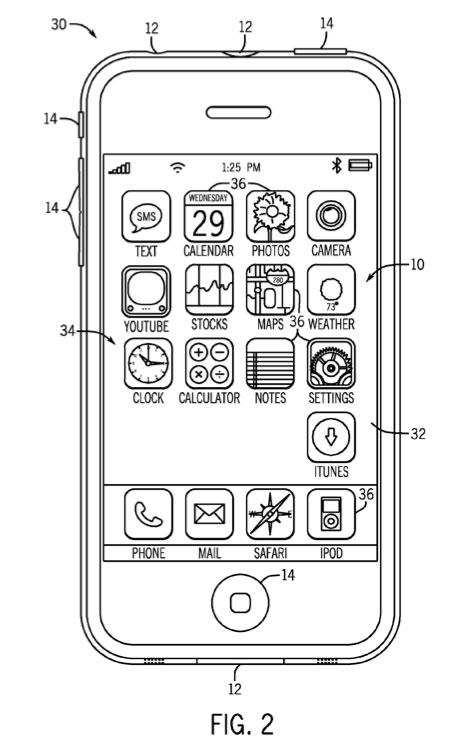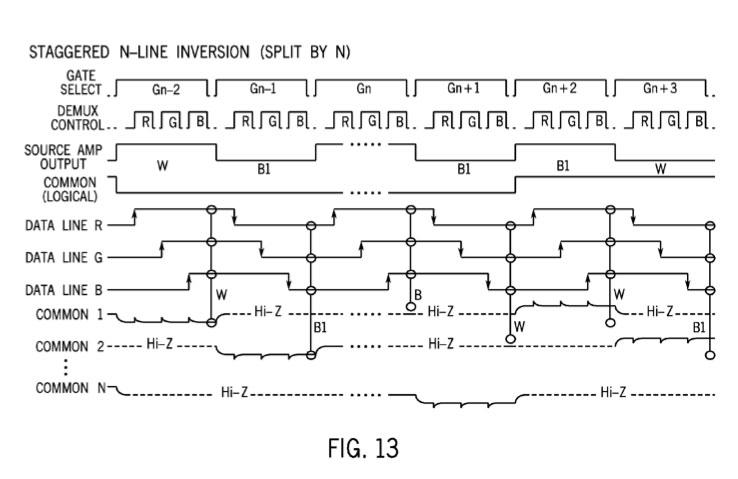This week, the U.S. Patent and Trademark Office introduced a new patent application from Apple, titled "Staggered Line Inversion and Power Reduction System and Method for LCD Panels." It describes various "inversion techniques" for an LCD display on a device like an iPhone or a MacBook, resulting in lower power consumption and longer battery life.
The application notes that with current LCD displays, the amount of light that is viewable on a particular pixel depends on the voltage applied to that pixel. Because applying a single direct current voltage could damage the pixels on an LCD, screens typically alternate, or invert, the voltage applied to the pixels between positive and negative direct current values.
But Apple said that refresh techniques used in current displays can cause artifacts or visual effects that are not easy on the eyes. In addition, the application suggests that new inversion techniques could be used to create LCD panels that consume less power.
To resolve this, Apple's invention offers a number of options, including staggered inversions with two lines, one line or any other potential number or combination.
Such a system could also include a "high impedance power reduction technique," the application states, that could be applied to "idle" lines on an LCD screen. In addition to potentially creating a display more pleasing to the eye, this could also reduce power consumption of an LCD panel.
Illustrations included with the application show the technology being applied to Apple's highly successful portable devices, including the iPhone and MacBook Pro.
The invention was first applied for on Feb. 11, 2010, and made public this year. It is credited to Yongman Lee.
Apple has shown considerable interest in improving its LCD displays on mobile devices this year. The iPad was the first portable device to employ in-plane switching technology which allows improved viewing angles and color reproductions. IPS was also introduced on the iPhone 4 this year.
In addition, both the iPhone 4 and iPod touch gained the Retina Display this year. Retina Display is Apple's branding for screens that are said to sport a pixel density so high that the human eye cannot distinguish between individual pixels.
 Neil Hughes
Neil Hughes





-xl-m.jpg)


-m.jpg)






 Amber Neely
Amber Neely
 William Gallagher
William Gallagher
 Malcolm Owen
Malcolm Owen

 Mike Wuerthele
Mike Wuerthele


 Thomas Sibilly
Thomas Sibilly








8 Comments
Is it just me or does the iphone shown look like the original. It is lacking some of the preloaded apps that now come on it plus there is no camera. I mean I'm sure they could use a generic iphone for patents of this kind but it the pic seems to be more detailed than other patent pictures. It might not mean anything but with this story having little to comment on I looked at the picture more closely perhaps.
While companies like Microsoft are still pushing stale Office and Windows updates as innovation Apple is looking constantly for ways to improve the user experience in this case longer battery life for it's devices. Apple is never content to sit on its successes and rake in the cash nor buy another company like Adobe (Macromedia) and do its best to milk a dated and poorly maintained bit of software called Flash. You go Apple.
Is it just me or does the iphone shown look like the original. It is lacking some of the preloaded apps that now come on it plus there is no camera. I mean I'm sure they could use a generic iphone for patents of this kind but it the pic seems to be more detailed than other patent pictures. It might not mean anything but with this story having little to comment on I looked at the picture more closely perhaps.
I doubt it means anything. This patent was filed long before the iPhone 4 was released. Furthermore, I have no idea how long they kick around a patent application before they submit it. I imagine they have to draw it up and send it to legal before it is submitted...
Add to that the fact that for the purposes of the patent application it does not matter how current the drawing is and I don't see anything interesting here.
Well, unless you consider the possibility of a lower power screen that is also better than what is available now interesting,,,
If it is glossy - who cares which viewing angles you can see the reflections from?
Maybe they have found a way of creating a hybrid glossy/antigalre display so they don't have to make two different displays. It's interesting that the new MBA has a silver border around the screen like the previous model and like the current MBP Antiglare screen. I wonder if the next version of the MBP will move away from the current glossy screen with black border.